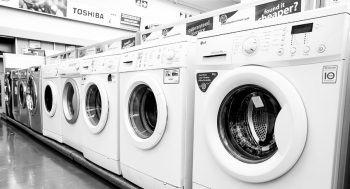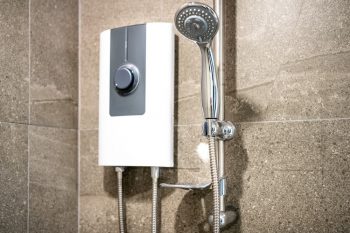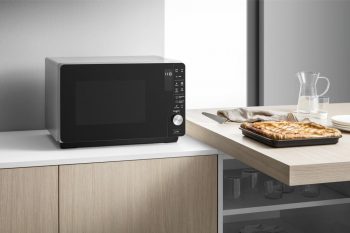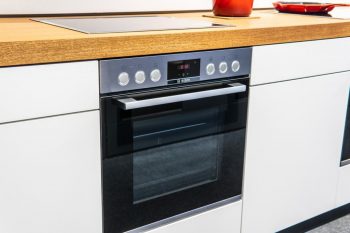
Controlling humidity in a refrigerator is a vital aspect of food storage that can significantly impact the freshness, flavor, and shelf life of your food. In this comprehensive guide, we dive deep into understanding how to control humidity in a refrigerator to ensure your food stays fresh and lush for longer.
Controlling humidity in a refrigerator involves using the fridge’s built-in features like humidity drawers correctly, limiting the frequency of opening the fridge door, and using tools such as refrigerator dehumidifiers or simple DIY solutions like a bowl of salt to absorb excess moisture. Regular monitoring with a digital hygrometer or a refrigerator thermometer with a humidity sensor, along with routine maintenance, can also help maintain optimal humidity levels.
Understanding Humidity in a Refrigerator
Humidity refers to the amount of water vapor present in the air. In a refrigerator, humidity can be influenced by factors such as the frequency of opening the fridge door, the type of food stored, the overall refrigerator temperature, and the condition of the door gaskets. High humidity levels can lead to excess condensation, which can foster the growth of mold and bacteria, affecting the quality and safety of your food. On the other hand, low humidity can cause food, especially fruits and vegetables, to lose moisture and wilt.
Why is Controlling Humidity Important?
Controlling humidity in your refrigerator is crucial to prolong the freshness and shelf life of your fruits and vegetables. High-humidity environments are ideal for vegetables that wilt, such as leafy greens, while low-humidity environments are better for fruits and vegetables that tend to rot easily. By controlling humidity, you not only save your food from spoiling but also save money in the long run.
How to Control Humidity in Your Refrigerator
Controlling humidity in your refrigerator can be achieved through several methods, from using built-in fridge features to employing simple DIY solutions.
Use Humidity Drawers Correctly
Most refrigerators come with humidity drawers, also known as crisper drawers, which have adjustable settings between low and high. These settings open or close a window in the drawer, allowing you to control the humidity level. For example, store unripe bananas, broccoli, carrots, and leafy greens in the high-humidity drawer, while fruits like apples and pears should be stored in the low-humidity drawer.
Use Refrigerator Dehumidifiers
You can purchase refrigerator dehumidifiers, such as ethylene gas absorbers and moisture absorbers, to help control humidity levels in your fridge.
DIY Solutions
If you’re building a curing chamber or a specialized refrigerator, you can use plug-and-play humidity and temperature control units to maintain the desired humidity level.
Limit Door Opening
Opening the refrigerator door frequently can cause humidity to build up inside the fridge. Try to limit the number of times you open the door to help control internal moisture.
Use Salt or Desiccants
Placing a bowl of common salt or desiccants in the refrigerator can help absorb excess moisture and maintain a lower humidity level.
Monitoring Humidity Levels in Your Refrigerator
Regular monitoring of humidity levels in your refrigerator can help you maintain optimal conditions for your food. You can use tools like a digital hygrometer or a refrigerator thermometer with a humidity sensor to track humidity levels.
Regular Maintenance to Prevent Humidity Build-Up
Routine maintenance is essential for preventing humidity build-up in your refrigerator. This includes setting the correct temperature, keeping the door closed as much as possible, not overfilling the fridge, storing food properly, checking door gaskets, ensuring proper airflow, cleaning the defrost drain, and controlling ambient humidity.
Conclusion
Controlling humidity in your refrigerator is a crucial aspect of maintaining the freshness and quality of your food. By understanding how to adjust humidity levels and regularly monitoring them, you can prevent food spoilage and extend the shelf life of your fruits and vegetables. With the right knowledge and tools, you can effectively maintain a healthy and efficient refrigerator environment.
Frequently Asked Questions
What is the ideal humidity level for a refrigerator?
The ideal humidity level for a refrigerator is between 40% and 60%. However, this can vary slightly depending on the type of food being stored.
How do I know if my refrigerator has too much or too little humidity?
Signs of too much humidity in your refrigerator include condensation or frost in the fridge, mold growth, and food spoiling quickly. Signs of too little humidity include food, especially fruits and vegetables, drying out or wilting quickly.
How often should I monitor the humidity levels in my refrigerator?
Ideally, you should check the humidity levels in your refrigerator once a week. However, if you notice any signs of too much or too little humidity, you should check it immediately.
Can I use a regular hygrometer to monitor humidity levels in my refrigerator?
Yes, a regular hygrometer can be used to monitor the humidity levels in your refrigerator. However, there are also fridge-specific hygrometers available that are designed to withstand the cold temperatures.
What is the role of a refrigerator dehumidifier?
A refrigerator dehumidifier helps to remove excess moisture from the air inside the refrigerator, helping to maintain the optimal humidity level and prevent the growth of mold and bacteria.












